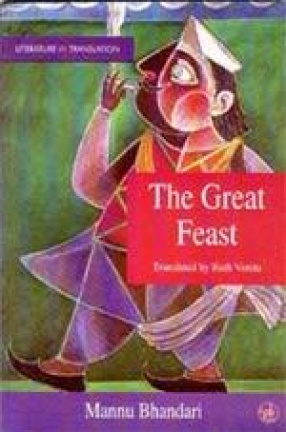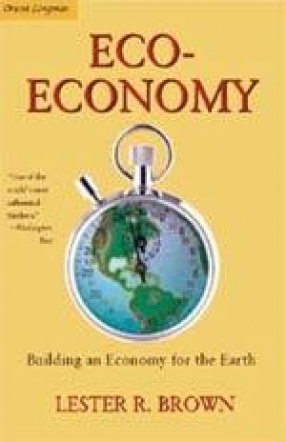
Orient Longman Private Limited

243 books











Research and development in the field of advanced materials has become an interdisciplinary activity, necessitating synergy among materials scientists, metallurgists, design engineers and technologists. Tailoring the structure at the nano or even molecular level can be explored as a successful approach to materials processing when the homogeneity and the structural information of a small-volume element can be scaled up to macroscopic (component) dimensions. ...

Papers presented at the Workshop on Western India and the Indian Ocean, held at Heidelberg in 1999.

Contemporary Indians", says G.N. Devy, "seem to be afflicted by a sense of amnesia in relation to literary history". The affliction is more severe, he feels, in the sphere of literary criticism, not only because older texts are generally unavailable, but also because modern India has lost touch with both the language and the ethos of the critical texts of ancient and medieval India. Students of Indian literature need to have access to India’s ...

Ayurveda, with its base in medicinal plants and its origins in ancient Indian history, is recognised as one of the major systems of alternative and complementary medicine. Of particular significance has been the fact that the therapeutic values cited in the ancient texts and the oral tradition have been subject to continuous interpretation and consolidation by scholars in the field. The concerns of medical botany, horticulture and the industry associated with ...

This book recreates the absorbing story and the lyrical beauty of the original Sanskrit epic - the Valmiki Ramayana - written over 3,000 years ago. In rich and expressive language, she narrates the legend of Rama, the Ikshvaku prince, who embodies the ideals by which a man, a warrior and a king must live. Rama's unquestioning adherence to duty in all the experiences that confront him makes the work not just an enthralling story but the 'Indian book of values, in ...

A bold expose of the contemporary Indian political scene that has cast aside morality and ethics and unfailingly betrays public trust for vested interests and private ends. The novel opens with the death of Bisesar—an unknown village youth—in itself an insignificant event. But with an important by-election around the corner, the feasting begins as opposing political parties like vultures seize upon the unfortunate event to extract political capital out of it, ...

Indian Medicinal Plants, based on a treatise prepared by S. Raghunatha Iyer, a scholar of both Sanskrit and Ayurveda, aims to make an authoritative contribution to the field. The original work which drew on classical texts, current research as well as the oral medical knowledge of tribal groups has been updated by scholars associated with the Arya Vaidya Sala in Kottakkal, India. This unique compendium offers profiles of 500 key species with detailed taxonomic ...

This book traces the evolution and transformation of the Jharkhandi identity over the last half-century culminating in the formation of the Jharkhand state in November 2000. The book provides decade-wise detailed socio-economic data for Jharkhand and undivided Bihar, beginning with 1950, and correlates the performance of the Jharkhandi political formations in Lok Sabha elections with the development profile of Jharkhand (in relation to undivided Bihar). It would ...

Written with the deepest empathy for women trapped by an almost The absolute lack of resources—financial, intellectual, emotional—these stories by Ashokamitran have all the identifiable characteristics of his writing—irony, interiority, sensitivity. The narrative in all three novellas—Sand, Malati, Those two—moves in a series of short scenes, building tension with a relentless layering of detail. The exploitation of the women (Sarojini, her mother, ...

This books is an ethnographic study of a community of leather workers (the Rabi Das), and their transformations under global capitalism. The lived experiences of the Rabi Das are embedded within the broader context of India’s economic liberalisation as well as in the local system of class and cultural relations in Bengali society. Rather than seeing the Rabi Das community as homogenous, the author highlights the essential tensions and ...

Our contemporary moment is characterized by a global resurgence of religion which manifests itself in many forms—from religious fundamentalism to a spiritual renewal of self and society. While religious fundamentalism and its globalization has aroused much interest and concern, mobilization of practical spirituality at the contemporary juncture has been a neglected theme and area of scholarly exploration. In this unusual study which combines anthropology and ...

Five times a day, close to a billion people turn to the Ka’aba in submission to Allah/God. In the seventh century C.E., the religion of Islam was revealed to the Prophet Mohammad through the Holy Koran. Since then, Islam has spread to every corner of the world: from Jerusalem to Sydney, and from Dakar to London and Detroit, Islam has shown continuity with creative versatility. This book presents the historic beginnings of Islam, the growth and contribution of ...

Despite the reshifting of values that has affected every aspect of life in the 20 century, William Shakespeare still stands as the greatest writer the English language has ever produced. Even so, many people have never read him. If you have never read "the Bard"—or if you’ve tried and given up in frustration—you need Shakespeare for Beginners. Author Brandon Toropov opens with the observation (and who can argue?) that Shakespeare’s genius is not ...

Eco-Economy discusses the need for a dramatic shift in our worldview by asking the urgent question: is the environment part of the economy or the economy part of the environment? Lester Brown argues the latter, pointing out that treating the environment as part of the economy has produced an economy that is destroying its natural support system. In this book, Brown describes how to restructure the global economy to make it compatible with the earth’s eco-system ...

Ferdinand de Saussure’s work is so powerful that it not only redefined modern linguistics, it also opened our minds to new ways of "doing" anthropology, literary criticism, and psychoanalysis. Genius like Saussure’s is meant to be shared, it is shameful to confine it to the "experts". Unfortunately, unless you were a linguist, Saussure was virtually unreadable. Until now, Saussure For Beginners is a clear, accessible guide to one of the ...

This is a deeply local and irreducibly global story about the construction of nature in Southern India. In its telling, Kavita Philip reveals how science, both as a scholarly discipline and as a concept in the popular imagination, was critical to building hegemony in the British Empire. Science also inspired alternative ideas of progress by elites and the disenfranchised. These competing spectres continue to haunt postcolonial modernities. Why and how has science ...

This is the story of a Himalayan community and their struggle for a quality of life, both for themselves and for the environment which shelters them. Robert Alter has spent a lifetime serving the people of what is now the new hill state of Uttaranchal. As he reflects upon his life and work at the NGO he set up and co-ordinated, his humanistic approach and gentle narrative transform and transmute experiences of the everyday. Ordinary lives take on epic proportions ...

The book deals with very current topics and is a compendium of 10 papers in 3 sections: 1. Labour in Development 2. Dual Economy Models in Development 3. Trade and Development. Each section explores the theoretical and empirical dimensions of one particular aspect of development. A book relevant to contemporary economic problems in India.

This volume examines the history, politics and anthropology of migration in India, Pakistan and Sri Lanka, as well as in numerous overseas locations (such as Fiji, Africa, the Caribbean and North America) where South Asians migrated during and after the colonial period. It addresses the meanings of ‘community’, and the important and contentious issue of the connections between migration, problems of identity, and ethnic conflict, from a comparative and ...

Preface. Acknowledgements. List of abbreviations. 1. Woman, ideology, empire: inventing the white woman in nineteenth-century British India. 2. Statis, Bibis, Purdahnashins: Anglo-India and the Indian woman. 3. Gender and 'Imperial citizenship': nineteenth-century British Raj fiction. 4. (Re)presenting Chivalric rescue: the novels of Philip Meadows Taylor. 5. Gender and the white (Wo)man's Burden: Flora Annie Steel. 6. Imagining (Anglo) India: Rudyard Kipling and ...

This book examines a monastic institution – the Madhva Matha of Udupi (Udipi) in Southern Karnataka – as a site of the formation of religious opinion, of monastic training, and practice, and the transmission of knowledge. The author brings both sociological and textual perspectives to bear on his work. While anthropologists and sociologists have worked on cults, practices, categories of specialists and concepts, Vasudeva Rao’s is one of the few books to ...

Zen from its foundation in China of the sixth century AD, has always been more than a religion. It is an intriguing system of principles and practices designed to give each individual the experience of eternity in a split second, the knowledge of divinity in every living thing. To create a book about Zen, however, is risky. It is one thing to describe the factual history of this exotic strain of Buddhism. It’s quite another thing to successfully convey the ...

Cleverly weaving narrative with excerpts from Corbett’s books and drawing on in-depth interviews with Corbett’s friends, here is another biography of a truly incredible man—Jim Corbett of Kumaon—legendary big game hunter turned naturalist, writer, photographer and humanist. Although Corbett’s six books offer several biographical details of his life, the portrait is ...
